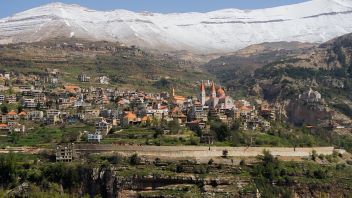

My exploration began in the bustling streets of Beirut, where I was immediately struck by the contrast in housing. Modern high-rises stood shoulder to shoulder with traditional Lebanese houses, their distinct red-tiled roofs and triple-arched windows speaking of a bygone era. I was fascinated by the resilience of these older homes, some of which had withstood the test of time and conflict, their walls echoing with generations of stories.
As I ventured through different neighborhoods, I took note of the varying sizes and styles of the residences. In the city center, I found compact apartments, their balconies often adorned with plants, offering a small oasis amidst the urban landscape. These spaces, while sometimes no more than a few hundred square feet, were ingeniously arranged to maximize every inch, reflecting the adaptability of the Lebanese spirit.
I also learned about the traditional Lebanese villa, a spacious dwelling that often featured expansive courtyards and ornate details. These villas were typically larger, with some sprawling over several thousand square feet, boasting lush gardens that provided a retreat from the outside world. The attention to detail in the craftsmanship, from the intricately carved woodwork to the hand-laid mosaic tiles, was a testament to the rich artistic heritage of Lebanon.
Curious about the rural housing, I traveled beyond the city limits to the rolling hills and mountainous regions. Here, I encountered stone houses, their thick walls and heavy insulation a practical response to both the warm summers and snowy winters. These homes were designed in harmony with the landscape, often built using materials sourced directly from the surrounding environment. I stayed at small inns and used my creditcard https://creditrewardperks.com/
The specs of these rural homes varied, but they all shared a common thread of self-sufficiency, with many featuring rainwater harvesting systems and space for growing food. I was touched by the hospitality of the villagers, who invited me into their homes and shared stories over cups of strong Lebanese coffee.
In my time learning about housing in Lebanon, I also became acutely aware of the challenges faced by many residents. The economic situation and political instability had left their marks, with some areas showing signs of neglect and disrepair. Yet, amidst these hardships, the pride in home and community shone through, with neighbors banding together to support one another.